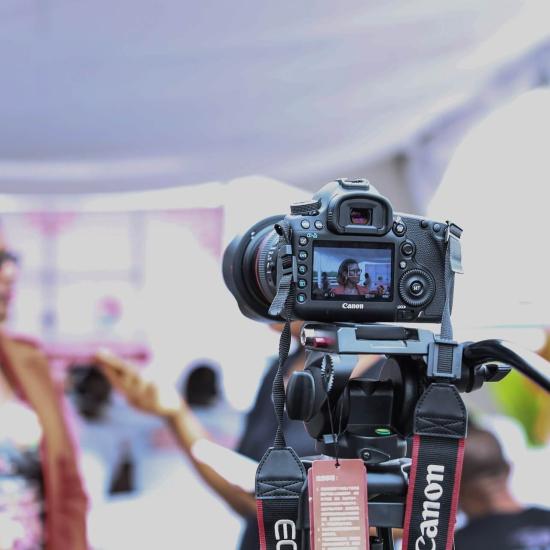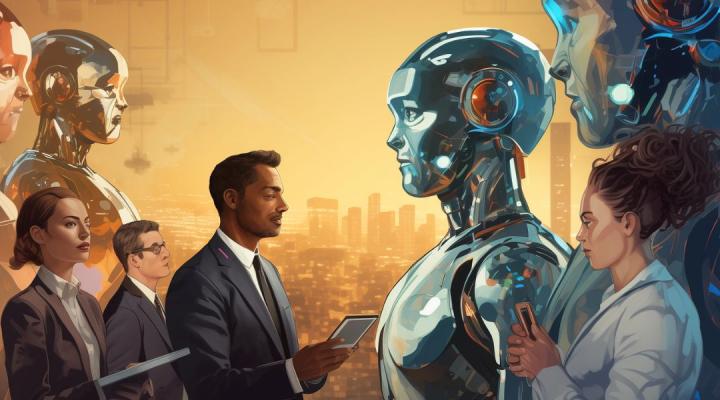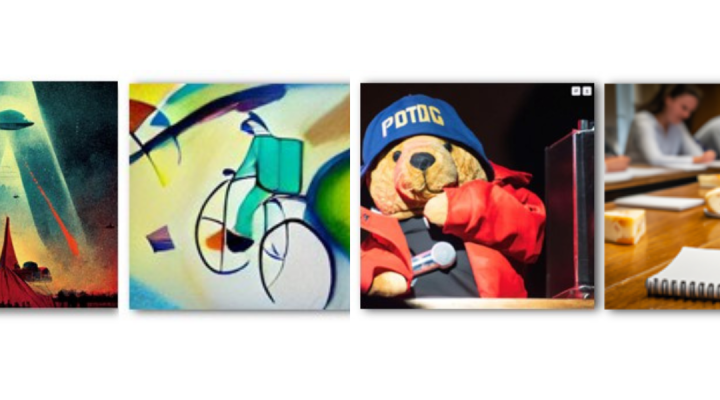Two industries got a Pulp Fiction-style adrenaline shot in lockdown - e-commerce and social content.
Now they are about to collide, as we explore in the first of three articles on media and the impact of technologies like artificial intelligence in the 2020s.
Last year made the extraordinary normal in almost every industry - content and advertising included. Cinemas closed, FC Barcelona played to an empty stadium, a $1bn James Bond film sat on the shelf for a year. As author D.B. Gerrard quipped: 'Future historians will be asked what quarter of 2020 they specialise in'.
So in 2021, can we expect a return to type? Quite the reverse.
In media, the whole decade will be revolutionary: a global, competitive exercise in algorithm-driven creativity. The winners in content distribution (think Netflix personalisation), production (virtual sets gave The Mandalorian its premium impact), music (Spotify recommendations), gaming (now $200bn+ annually), and even events and newspaper publishing (the FT and New York Times are years ahead on analytics) will be defined by their ability to leverage user data and deploy tools like machine learning to match individual audience segments to content and adverts.
In three articles we will look at the revolution in streaming; new video creation tools based on computer game technology, and in this first report, e-commerce and social content.
An e-commerce giant will jump species - and buy a media company
Every retailer now needs to also be a content company; you can see it in your Instagram feed, or Rihanna’s $1bn+ Fenty brand. Content makes you swipe to buy, and e-commerce companies use it to drive sales more cost effectively than Google ads, where customer acquisition cost is high.
Booming ecommerce companies such as Germany’s Zalando or Metro, or UK unicorns such as Birmingham’s Gymshark (valued above £1.2bn in a recent financing), and Manchester’s THG (listed at £7.7bn) and BooHoo (£4.51bn) all added content studios, from stills to social video, commercials and films.
THG is even launching Icon, the size of a major Hollywood sound stage, behind an Amazon distribution warehouse, and next to a major freight airport (Manchester).
Now one of these e-commerce beasts will use their equity to become, by acquisition, a content producer/distributor with tens or even hundreds of millions of followers, and then use that engagement to adrenalise sales. They will fully integrate shopping into the content viewing experience.
For potential acquisitions look at New York’s part-Discovery-owned Group Nine Media which owns viral creators Now This, Thrillist, The Dodo, Popsugar and Seeker; or Manchester’s LADbible group (125m followers) with a full set of social channels; or the 2019-merged Vice Media/Refinery 29. In turn, adding e-commerce to the extant programmatic advertising and branded content business models of the content providers will increase their profitability and make the acquisitions pay back faster.
That won’t be all in this space. Expect Amazon to integrate direct shopping into its own shows too, on Prime Video. Expect Snapchat, Facebook and Instagram to massively upscale their e-commerce offers. And don’t be surprised when the Chinese model of social content and e-commerce combined arrives in Europe, possibly with a group-buying function like Pinduoduo thrown in – an updated, content-rich version of the Groupon model.

Algorithmic advertising will come to the rescue of commercial TV
Faced with an existential challenge from the streamers, UK broadcasters opted to join them in 2020.
Commercially funded (though public-owned) Channel 4 repositioned itself as the UK’s largest free streaming service. It’s advertising-funded, not subscription like the big players, and aims for 40% digital revenue by 2024. The BBC dissolved its hitherto-important channel controller roles, giving commissioning power to iPlayer-first genre heads instead, like Netflix. Well-reviewed dramas like The Scorpion and Industry landed on streaming ahead of TV channels. Commercial channel ITV put a priority on growing direct-to-consumer revenue streams, as well as traditional brand advertising.
Brand-building is about securing future sales, revenue and profit. Activation, on the other hand, is focused solely on immediate response. - Dixit Sapra, Kantar
But commercially, the challenge has only just begun, as this Broadcast Video on Demand (BVOD) model seeks to counter both the subscription, ads-free model of Netflix and Disney+, and the narrative that broadcast advertising and its brand-building capabilities are a luxury that precision-driven performance marketing can systematically beat. All the evidence is that a mix of long term brand-building and short-term performance marketing works best, as discussed for example in this article from global advertising agency WPP.
TV networks facing an existential challenge to their model and programming budget cuts, will need a tool to help them finesse the jump from broadcast to streaming, and from brand to performance. This will be what in the US has been called a-commerce, or algorithm-driven e-commerce advertising. It combines the targeting of Google ads with the contextualised content of social advertising, but with the production values of proper TV. Their success in making this jump will drive the long-term commercial futures of the major commercial broadcasters worldwide.
Note: Of the companies mentioned in this article, Alex Connock is a shareholder in ITV, Amazon, Netflix and BooHoo. Alex is Fellow in Management Practice (Marketing) at Saïd Business School.
This article is part of a three-part series looking at media in the 2020’s:
- Predictions for the media in 2021: How to train your algorithm
- Predictions for the media in 2021: An Unreal Engine
- Predictions for the media in 2021: A real-world ‘Fortnite’




